Price on application
This object includes complimentary, Insured Shipping / Delivery within the UK
This object is eligible for a Certificate of BADA Provenance
The BADA Standard
- Since 1918, BADA has been the leading association for the antiques and fine art trade
- Members are elected for their knowledge, integrity and quality of stock
- Our clients are protected by BADA’s code of conduct
- Our dealers’ membership is reviewed and renewed annually
- Bada.org is a non-profit site: clients deal directly with members and they pay no hidden fees
George III Watch Stand.
England or America, Circa 1790.
Of architectural form with three gables with urn finials, with decorative inlays of boxwood and harewood and with an inset front door and four windows painted in watercolour on paper and set behind glass, on a curved base containing a single drawer with a carved bone knob, raised on six bun feet, the reverse with a fold down section for easy insertion and removal of the watch, above the scratched inscription 'Leonard Jack Harrison 1796. This originally belonged to James E. Park Senr 1780.'
Provenance: Ex McGreery Collection.
The reverse of the watch is inscribed 'Brougham, London', possibly by George Brougham of Baltimore, originally a London clock and watch maker who moved to Baltimore in 1774.
Pinto writes that watch stands 'had to be made to look important, for it was intended to convert into a clock, a watch, still doubtless reliable as a timepiece, too valuable to discard entirely, but now outmoded...it is probable that the periods of strongly marked designs coincide either with technical improvements, or fashion changes which rendered expensive pocket watches outmoded. There were, for instance, ...exaggeratedly large architectural designs in the 1780-1800 Sheraton style....usually of mahogany, inlaid with other lighter woods and represent the front of imaginary or real buildings of importance, usually of several storeys, with a front entrance approached by a flight of steps, many windows set in inlaid 'brick' or 'stone' veneers and the watch looking very insignificant in a clock tower, anything from 12 in. to 18 in. above the plinth, ' (Edward H. Pinto, Treen and other wooden bygones, Bell and Hyman, 1969 p. 425).
Dimensions
36 x 34 x 12.5 cmPrice on application
This object includes complimentary, Insured Shipping / Delivery within the UK
This object is eligible for a Certificate of BADA Provenance
Stock number
613aThe BADA Standard
- Since 1918, BADA has been the leading association for the antiques and fine art trade
- Members are elected for their knowledge, integrity and quality of stock
- Our clients are protected by BADA’s code of conduct
- Our dealers’ membership is reviewed and renewed annually
- Bada.org is a non-profit site: clients deal directly with members and they pay no hidden fees

